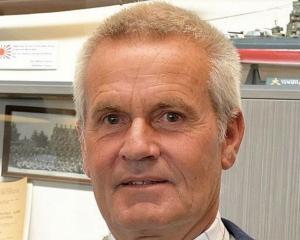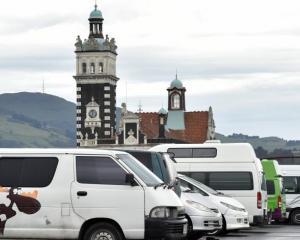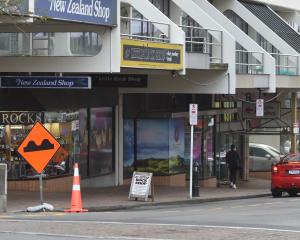The battle lines have been drawn on a wind farm project that has "polarised'' Blueskin Bay.
The depth of feeling about the project was highlighted by the packed public gallery at yesterday's resource consent hearing for Blueskin Resilient Communities Trust's (BRCT) $5million to $6million proposal to build three wind turbines on Porteous Hill, north of Dunedin.
The hearing began with a blow to the BRCT as council planner Darryl Sycamore no longer recommended consent be approved.
He said he was reserving his position until the end of the hearing, given the trust had made changes to the proposal.
The changes included reducing the maximum height of the wind turbines to 90m from the original 125m.
Worries about birds striking turbines, noise and health were among the issues brought up yesterday, but a key concern was around the impact on the area's landscape.
The trust and its supporters said any negative effects would be more than made up for by the benefits, including reducing New Zealand's reliance on carbon-producing power plants.
The wide gap in views was clear yesterday, with resident Denis Albert saying the wind farm equated to a "vandalisation of the landscape of Blueskin Bay''.
In contrast, trust landscape experts Di Lucas and Mike Moore said the wind farm was complementary, and added, to the landscape.
Ms Lucas said she had been involved in a lot of wind farms and was "heartened'' by how appropriate the proposal was for the surrounding landscape.
Mr Moore agreed, but accepted that whether an individual appreciated the turbines was subjective. "You either like it or you don't, I guess.''
Both sides of the debate claimed to have support from the majority of the Blueskin Bay community. This comes after there were 73 submissions in support of the project, 68 opposed and five neutral.
Mr Albert and landowner Graeme Bennett questioned support for the project and consultation carried out by the trust.
Mr Albert said the trust and its supporters were living in a "little bubble'' where they only listened to their supporters.
Mr Bennett agreed, saying the surveys the trust pointed to were more likely to be filled out by supporters.
"It's like going into a church and asking who believes in God.''
In response to questioning from commissioner Colin Weatherall, BRCT manager Scott Willis said supporters of the project were surprised by the negativity from some residents and the "claim'' that consultation had been lacking.
The idea of having wind turbines in Blueskin Bay had its origins in 2006 and since then the trust had engaged in a "comprehensive approach'' to consultation, which was part of its ethos.
Both Mr Willis and trust lawyer Bridget Irving highlighted the benefit of the project, with the anticipated $100,000 per year profit from the wind farm going towards community projects, including supporting the installation of solar panels and insulating homes.
"Its genesis has been in a community that is deeply concerned about the impacts of climate change and is taking active steps to address it.
"As a result the proposal generates a number of positive effects that are not typically present in an application for a wind farm,'' Ms Irving said.
She explained a company, Blueskin Energy Ltd, had been formed by the trust to develop the project.
As part of the trust's application, a series of experts - including a geologist, an acoustic expert, an ornithologist and two landscape experts - spoke about the issues of contention.
Ornithologist John Craig said evidence gathered from other New Zealand turbines showed the effect on birds from the three turbines would be "negligible''.
You could be "totally confident'' the rare species of the area would not fly over the site and be hit by the turbines, given there were valleys on each side.
Stephen Chiles said noise from the turbines would be "audible'' for people living nearby, but relatively "low level''.
The noise levels could exceed limits in one location, but this could be remedied by adjusting the operation of the turbines.
Mr Sycamore highlighted the split among residents in a report tabled at the meeting, in which he said the two sides were "diametrically opposed based on perception of the effects and benefits'' and the community was "quite polarised''.












